Table of Contents
Ready to get strong, feel awesome, and maybe even ditch some extra baggage? Forget fancy gyms and complicated machines. This article is your ticket to the world of kettlebells, focusing on an easy beginner kettlebell workout. I know, the word 'kettlebell' might sound intimidating, like some medieval torture device. But trust me, it's just a funny-looking weight that's about to become your new best friend. We'll start with the basics: how to hold this thing without dropping it on your toes, then move to six simple exercises that'll get your whole body working. Don't worry about getting lost; I'll guide you through a quick 20-minute routine. After that, we'll tackle the big questions: what kind of kettlebell do you need? How heavy should it be? And most importantly, can this thing actually help you lose weight? By the end, you'll not only know how to do an easy beginner kettlebell workout, but you'll be pumped to start. Let's get swinging!
How to Hold a Kettlebell: The Foundation of Your Workout
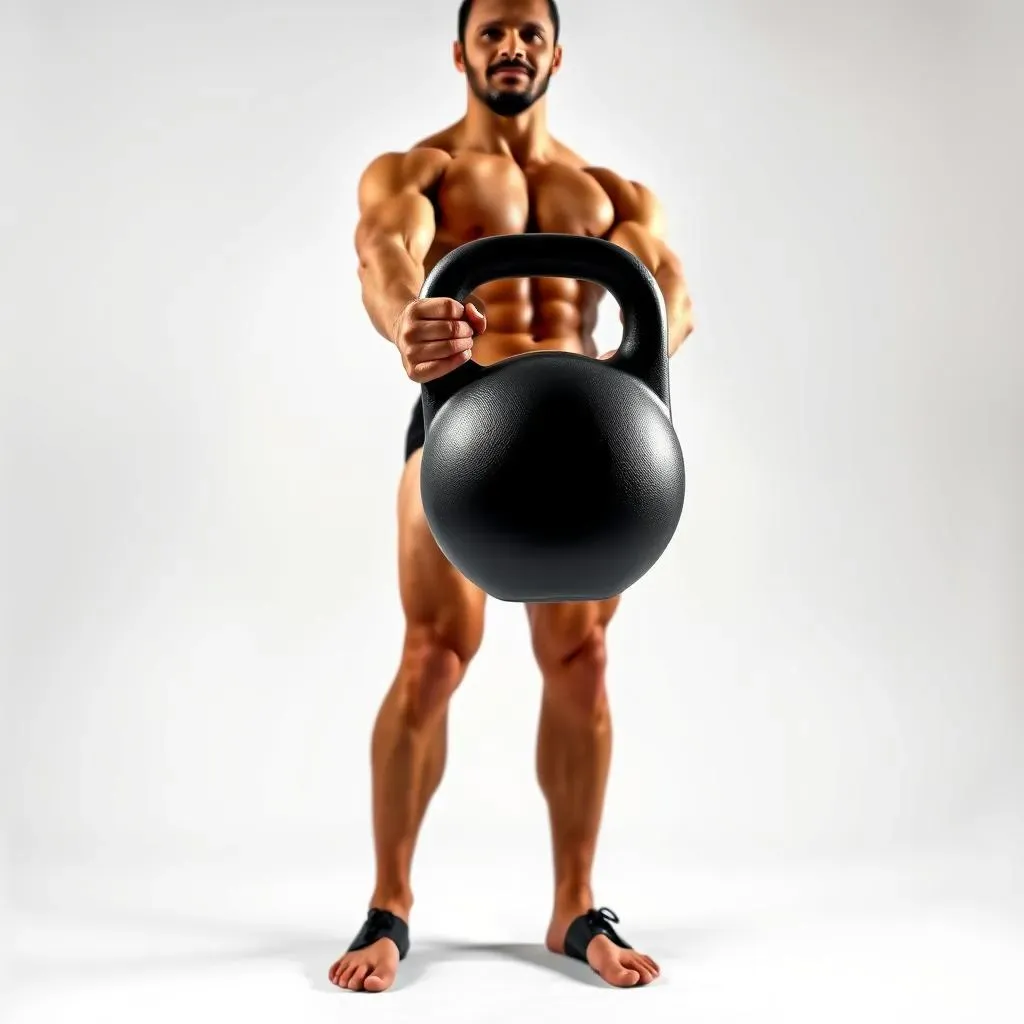
How to Hold a Kettlebell: The Foundation of Your Workout
The Grip: It's All in Your Hands
Okay, so you've got this cannonball with a handle, now what? First things first, the grip is key. Don't just grab it like a suitcase; think of it more like you're shaking hands with the kettlebell. You want a firm grip, but not so tight that you're turning your knuckles white. Imagine you’re holding a bird, you want to hold it tight enough so it doesn't fly away but gentle enough so you don't crush it. The handle should sit diagonally across your palm, not straight across, and your fingers should wrap around it comfortably. If it's digging into your palm or your wrist feels weird, adjust your grip. This is the starting point for everything, so make sure it feels right.
The Stance: Feet Firmly Planted
Now that you're holding it correctly, let's talk about your feet. Stand with your feet about shoulder-width apart. This gives you a solid base. It's like building a house; you need a good foundation, right? Your weight should be evenly distributed, and your toes should be pointing straight ahead, or slightly outwards. Don't stand like you're on a tightrope. You'll need to bend your knees slightly. Think of it like you're about to jump, not like you're about to sit down. This is your power stance for everything you're about to do, so get comfortable with it. It's the difference between a smooth swing and a faceplant, so don't skip this step!
Grip Check | Stance Check | General Tip |
|---|---|---|
Firm but relaxed | Shoulder-width apart | Start light, focus on form |
Handle diagonal across palm | Weight evenly distributed | Don't rush |
Fingers wrapped comfortably | Slight bend in knees | It's a process |
6 Best Kettlebell Exercises for an Easy Beginner Workout
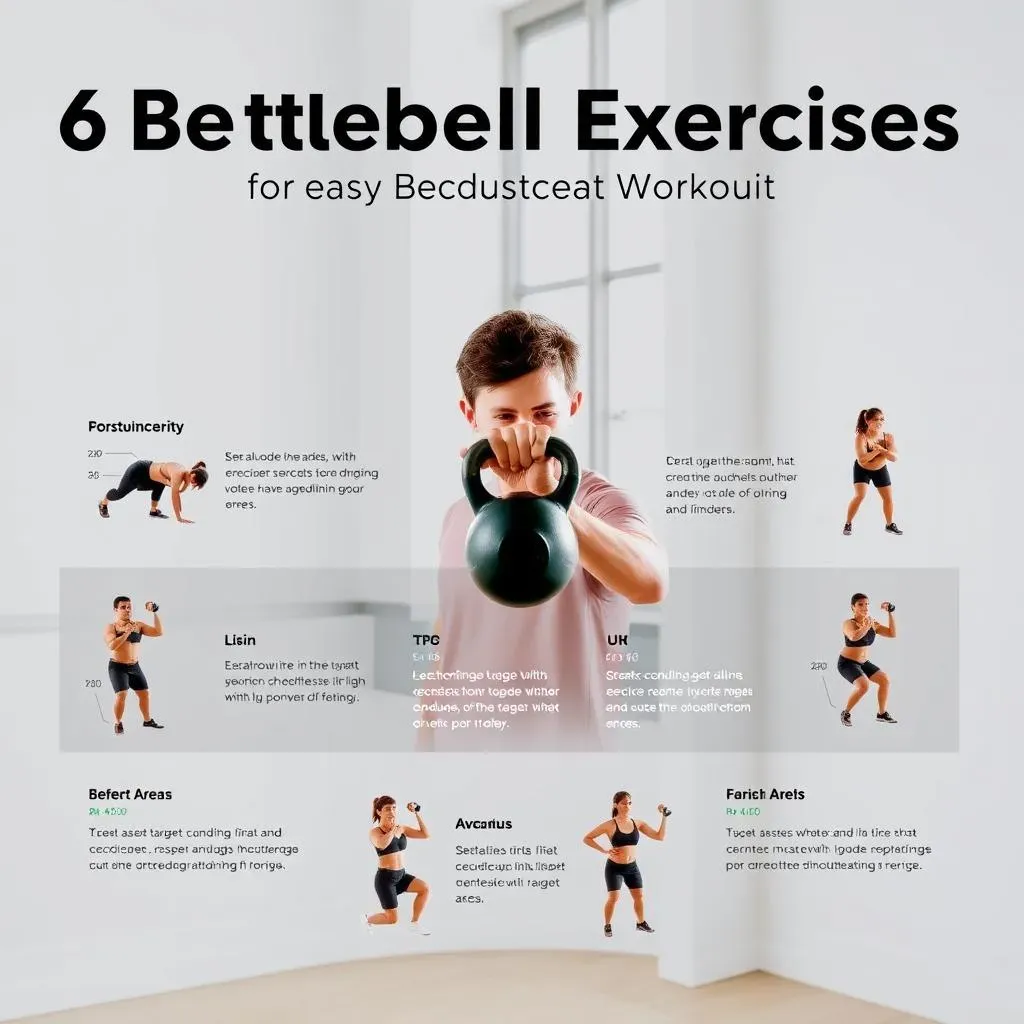
6 Best Kettlebell Exercises for an Easy Beginner Workout
Alright, now that you've mastered the art of holding a kettlebell (it's not rocket science, I promise), let’s get into the fun part: the exercises! These six moves are like the greatest hits of kettlebell training for beginners. We're talking full-body action, building strength, and getting that heart rate up – all without needing a PhD in fitness. I've picked these because they're relatively simple to learn, but still pack a punch. They'll work your legs, core, arms, and even your brain as you try to keep everything coordinated. Don't worry if you feel a bit clumsy at first; we all do. Just focus on good form, and the rest will follow. It's about progress, not perfection, okay?
First up, we have the **Halo**. It's basically like you're drawing a circle around your head with the kettlebell, kind of like a halo, hence the name. This is great for warming up your shoulders and getting your core engaged. Then there’s the **Goblet Squat**, which is just a fancy way of saying you hold the kettlebell close to your chest while you squat. This move is fantastic for building leg strength and improving your squat form. Next, we have the **Overhead Press**, where you push the kettlebell straight up over your head. This works your shoulders and arms, but also requires some core stability. For a bit of a change, you have a choice between **Kettlebell Swings** or **Romanian Deadlifts (RDLs)**, both focusing on the posterior chain (back of the body). Swings get your heart rate up, while RDLs focus on hamstrings and glutes. Then, we've got **Bent Over Rows**, pulling the kettlebell towards your chest while bending forward, this is perfect for your back. Last but not least, **Front Rack Reverse Lunges**, where you hold the kettlebell in front of you while doing reverse lunges, this works your legs and core. These six moves, done right, are all you need for an awesome beginner workout.
Exercise | Target Area | Why It's Great for Beginners |
|---|---|---|
Halo | Shoulders, Core | Warms up joints, engages core |
Goblet Squat | Legs, Core | Builds leg strength, improves squat form |
Overhead Press | Shoulders, Arms, Core | Develops upper body strength |
Kettlebell Swings or RDLs | Back of the body (posterior chain) | Swings: Cardio, RDLs: Hamstrings/Glutes |
Bent Over Rows | Back, Biceps | Strengthens back muscles |
Front Rack Reverse Lunges | Legs, Core | Works legs and core |
Choosing Your Kettlebell: Weight and Type for Beginners
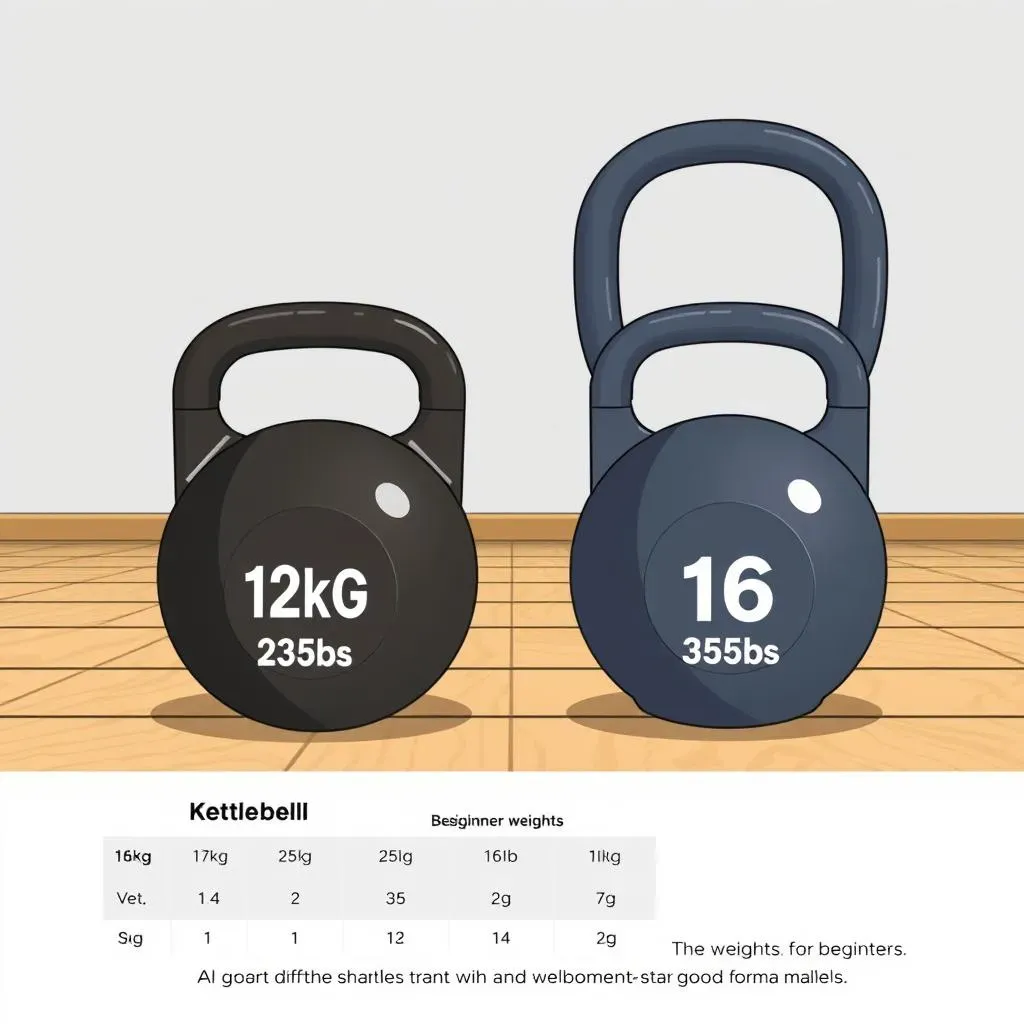
Choosing Your Kettlebell: Weight and Type for Beginners
Standard vs. Competition Kettlebells: What's the Deal?
So, you're ready to buy a kettlebell, huh? It's not as simple as grabbing the first one you see. You'll notice there are two main types: standard and competition. Standard kettlebells are usually made of cast iron, with a wider handle and varying sizes. They're like the old-school, rugged option. Competition kettlebells, on the other hand, are all made to the same dimensions, regardless of weight. They're typically steel, with a more consistent handle size. This makes them ideal if you plan on getting serious about kettlebell training and want a consistent feel as you increase weight. For a beginner, a standard kettlebell is perfectly fine, and often more budget-friendly. Don't sweat it too much; you're not entering the Olympics just yet!
Weight: Start Light, Go Slow
Now for the big question: how heavy should your kettlebell be? This is where a lot of people get tripped up, thinking they need to start with something massive. Wrong! It's better to start light and master the movements first. Think of it like learning to ride a bike; you wouldn't start on a unicycle, would you? For most women, a 12kg (25 lbs) kettlebell is a good starting point. For men, 16kg (35 lbs) might be better. These are just guidelines though, it all comes down to your current fitness level. If you're not sure, go lighter. It's always better to start with a weight that allows you to perform the exercises with good form, rather than struggling with a weight that's too heavy. You can always go heavier later, but you can't fix bad form easily. So be smart and choose a weight that challenges you without making you feel like you're battling a bear.
Kettlebell Type | Material | Handle | Best for |
|---|---|---|---|
Standard | Cast Iron | Wider, varying sizes | Beginners, general fitness |
Competition | Steel | Consistent size | Serious training, competitions |
Weight Suggestion | For Women | For Men | Important |
Starting Weight | 12kg (25lbs) | 16kg (35lbs) | Start with good form |
Your 20Minute Easy Beginner Kettlebell Workout Routine
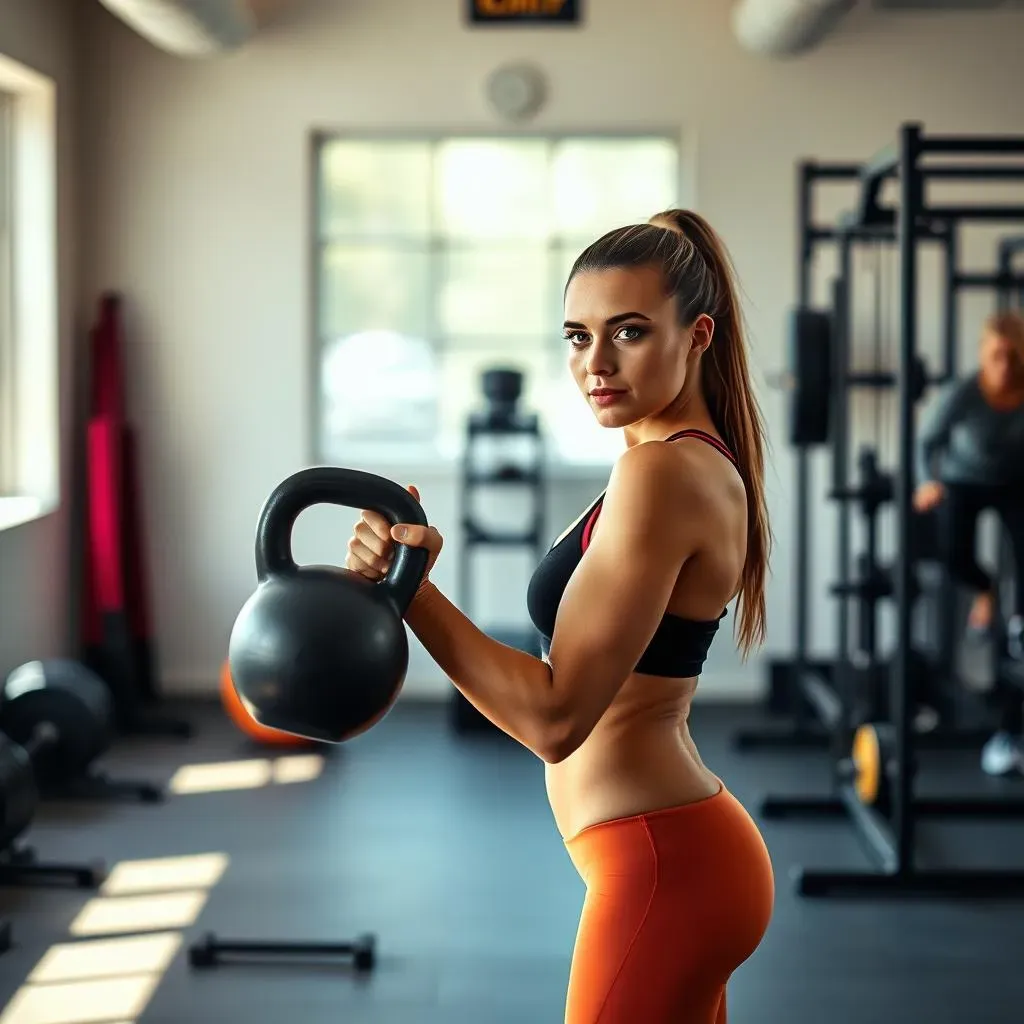
Your 20Minute Easy Beginner Kettlebell Workout Routine
The Warm-Up: Get Your Body Ready
Before we jump into the main workout, let's get our bodies prepped. Think of it like warming up your car on a cold morning – you wouldn't just slam it into gear, right? We need to wake up those muscles and get the blood flowing. Start with 2 minutes of light cardio, like marching in place or some gentle jumping jacks. Then, do 5 reps of the halo exercise to get those shoulders ready, and a few bodyweight squats to warm up your legs. This isn't about pushing yourself to the limit, it's just about getting your body ready for the real fun. Don't skip this step, it's crucial for preventing injuries and getting the most out of your workout.
The Main Circuit: Six Moves, Three Rounds
Okay, now for the main event! We're going to do three rounds of the six exercises we talked about earlier. Each exercise will be done for 45 seconds, followed by 15 seconds of rest. You can use a timer or an app to keep track. It might sound easy, but trust me, by the end of the three rounds, you'll be feeling it. Remember, focus on good form over speed. It’s better to do fewer reps correctly than to do a bunch with bad form. If you need to take an extra breather, go for it. This is your workout, so listen to your body. It's not a race, it's about building strength and getting stronger.
Exercise | Duration | Rest |
|---|---|---|
Halo | 45 seconds | 15 seconds |
Goblet Squat | 45 seconds | 15 seconds |
Overhead Press | 45 seconds | 15 seconds |
Kettlebell Swings or RDLs | 45 seconds | 15 seconds |
Bent Over Rows | 45 seconds | 15 seconds |
Front Rack Reverse Lunges | 45 seconds | 15 seconds |
The Cool-Down: Time to Chill
Alright, you've done an awesome job! Now, let's bring that heart rate down and stretch out those muscles with a 2-3 minute cool-down. Do some light stretches, holding each stretch for about 20 seconds. Focus on the muscles you worked the most, like your legs, shoulders, and back. Stretching is like giving your muscles a nice pat on the back after a tough workout. It helps to improve flexibility and reduces the risk of soreness. Don't rush this part; it's just as important as the workout itself. You've earned this time to relax and recover. Great job!
Stepping It Up: The Intermediate Kettlebell Workout

Stepping It Up: The Intermediate Kettlebell Workout
Ready for a Challenge? Time to Level Up
So, you've conquered the easy beginner kettlebell workout, huh? Feeling like a kettlebell ninja? Awesome! Now, let's crank things up a notch. The intermediate workout is where we start adding some spice, introducing new moves and a bit more intensity. Don't worry, we're not going from zero to superhero overnight. We're just building on the foundation you've already created. Think of it like leveling up in a video game; you've learned the basics, now it's time to unlock some new skills. We're gonna push you, but in a good way. This is where you really start seeing those gains, not just in strength, but in confidence too.
New Moves, New Muscles: Expanding Your Arsenal
Forget those same old six moves for a bit, we're bringing some fresh faces to the party. We're still gonna keep the Goblet Squat, because it's just too good to leave behind. But now we're adding a twist with the **Kettlebell Lateral Goblet Lunges**. These are gonna work your legs in a whole new way, hitting those inner and outer thighs. Then we've got the **Renegade Row**, which is a plank combined with a row; this is a full body workout, really targeting your core and back. These moves are more challenging, they require more balance and coordination, but they're also more rewarding. It's like learning a new language; at first it's tough, but then you start to understand and it opens up a whole new world.
Exercise | Focus | Why It's Intermediate |
|---|---|---|
Kettlebell Lateral Goblet Lunges | Inner/Outer Thighs, Legs | Increased balance and coordination |
Renegade Row | Core, Back, Arms | Combines plank and row, requires stability |
Putting It All Together: Your Intermediate Circuit
Just like before, we're going to do a circuit, but with some tweaks. You'll start with a warm-up, of course, still 2 minutes of light cardio and a few reps of the halo and body weight squats. Then, we're going to do three rounds of the Goblet Squat, Kettlebell Lateral Goblet Lunges, and Renegade Row. Each exercise will be done for 45 seconds, followed by 15 seconds of rest. After the three rounds we will do the cool-down, with some light stretches. This workout is more intense, but it's also more effective. You're not just going through the motions; you're pushing yourself, building real strength, and seeing real results. This is where the magic happens, so get ready to shine.
Can Kettlebells Help You Lose Weight? The Truth
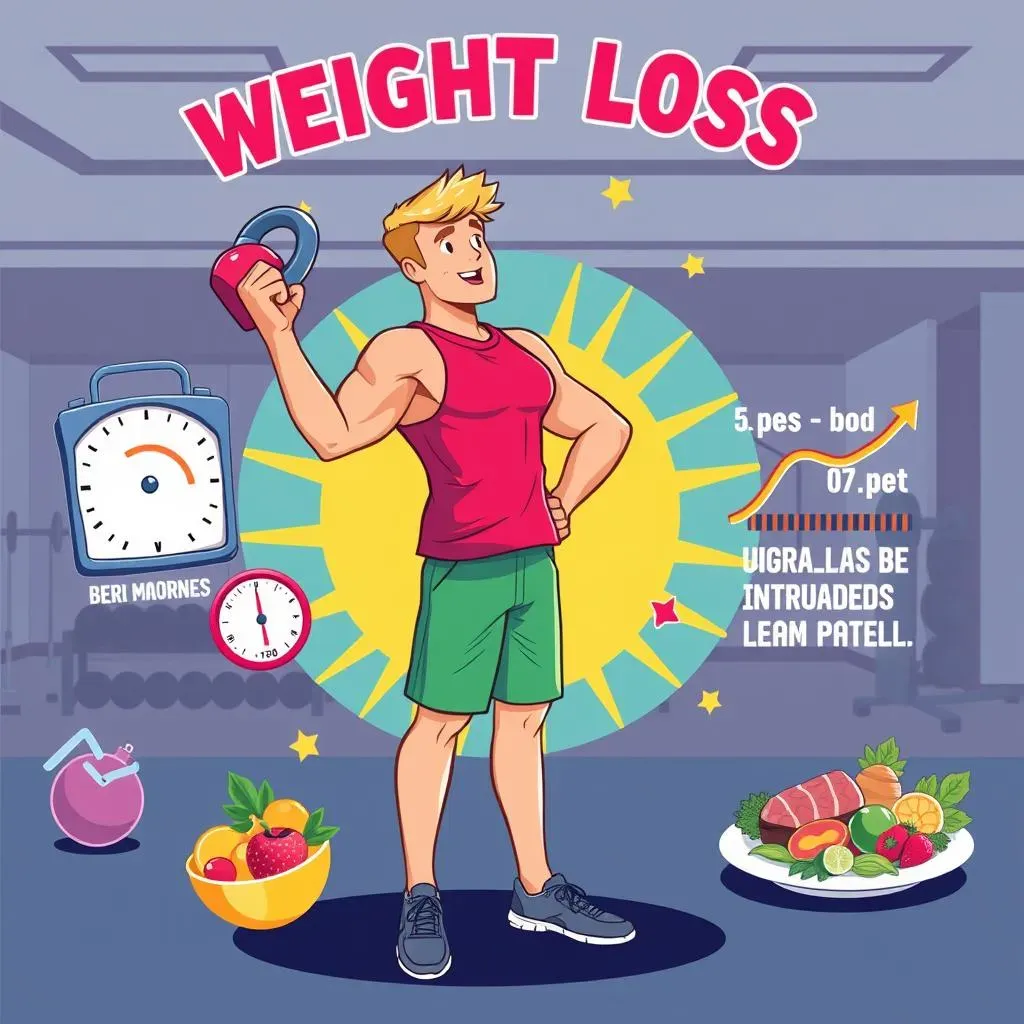
Can Kettlebells Help You Lose Weight? The Truth
The Kettlebell Advantage: More Than Just Lifting
Alright, let's get to the juicy part: can kettlebells actually help you lose weight? The short answer is a resounding YES, but it's not magic. It's about science. Kettlebell workouts are fantastic because they're not just about lifting heavy things; they're about full-body movements that burn a ton of calories. When you're doing swings, squats, or even overhead presses, you're not just working one muscle group, you're engaging multiple muscles at once. This means you're burning more calories during the workout and even after, thanks to the "afterburn effect." Plus, kettlebells are great for building muscle. And more muscle means a faster metabolism, which makes it easier to lose weight and keep it off. So, it's not just about the workout itself; it's about the long-term changes it creates in your body.
It's also important to remember that weight loss is a marathon, not a sprint. Kettlebells are a tool to help you, but they're not the whole solution. You can't just swing a kettlebell for 20 minutes and expect to wake up 10 pounds lighter. It takes consistency, dedication, and a balanced approach. Kettlebells are a great way to build strength and burn calories, but you also need to focus on your nutrition and make sure you're fueling your body with healthy food. It's like building a house; you need a strong foundation (the workouts), but you also need the right materials (the nutrition) to make it last.
Nutrition: The Missing Piece of the Puzzle
Now, let's talk about the elephant in the room: nutrition. You can do the most intense kettlebell workouts in the world, but if you're still eating junk food, you're not going to see the results you want. It's like trying to fill a bucket with holes; you can keep pouring water in, but it's never going to fill up. You need to fix the holes (your diet) to see real progress. This doesn't mean you have to go on some crazy diet; it just means making smarter choices. Focus on whole, unprocessed foods, like fruits, vegetables, lean proteins, and whole grains. Cut back on sugary drinks, processed snacks, and fast food. It's about making small changes that add up over time.
Think of your body like a high-performance car; you wouldn't put cheap gas in it, would you? You need to fuel it with the right stuff to make it run smoothly. And just like a car needs regular maintenance, your body needs consistent care. This means not just eating well, but also getting enough sleep and managing stress. These factors play a big role in weight loss and overall health. So, while kettlebells are a fantastic tool, they're just one piece of the puzzle. You need to put all the pieces together to achieve your weight loss goals.
Kettlebell Benefit | Why It Matters for Weight Loss | Nutrition Tip |
|---|---|---|
Full-body workout | Burns more calories | Focus on whole foods |
Builds muscle | Increases metabolism | Cut back on processed foods |
Afterburn effect | Burns calories after workout | Stay hydrated |
Improves strength | Supports long term health | Get enough sleep |